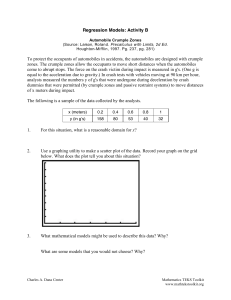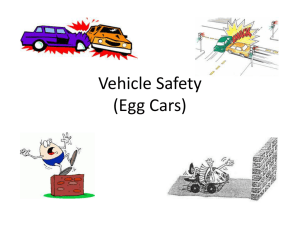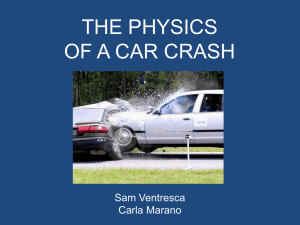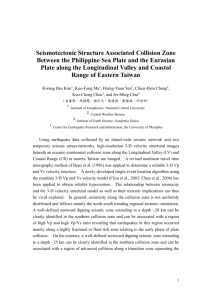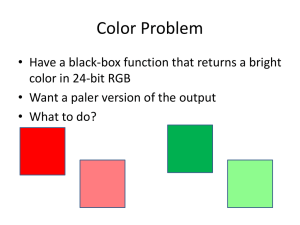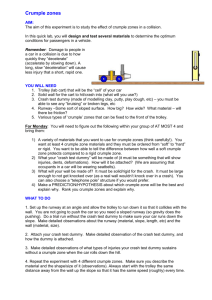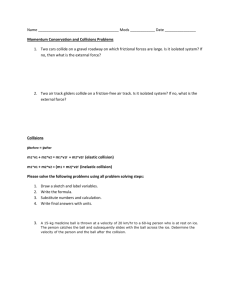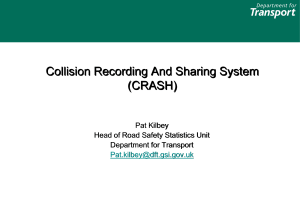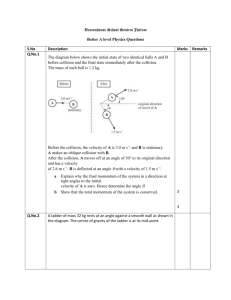Crumple zones - Contemporary Science Issues | Home
advertisement
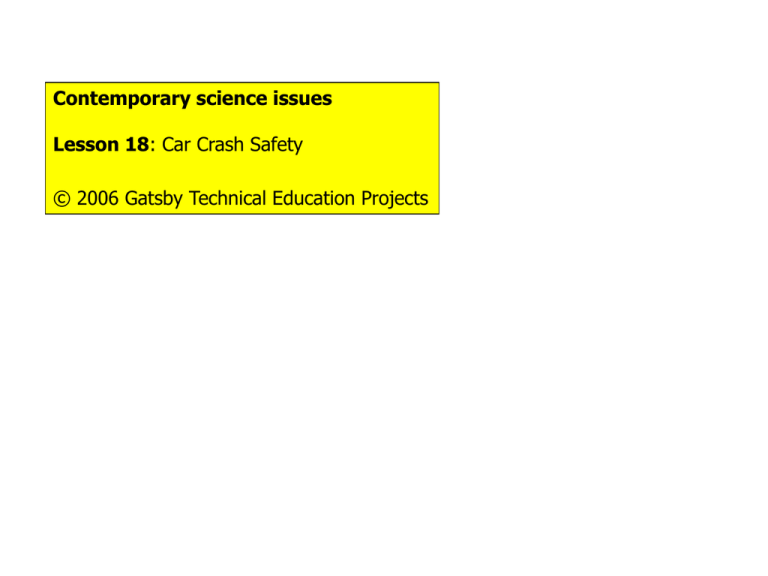
Contemporary science issues Lesson 18: Car Crash Safety © 2006 Gatsby Technical Education Projects Car Crash Safety! How Can We Reduce the Effects of Collisions? Notice that the passenger compartment is not damaged. Why? Again, the impact area collapses but the passenger area remains intact. Crumple Zones • Regions around a vehicle which are made weak deliberately • In a crash, these regions deform before the passenger ‘capsule’ BUT • If the passengers aren’t wearing seatbelts……. …they carry on moving at the velocity of the car before the impact! Old-fashioned seat-belts could cause damage like this. Modern “inertia-reel” belts stretch slightly before locking Why should a stretchy seat belt cause less damage? Do they change your deceleration? Do they change the force on you? Does a crumple zone or a stretchy seat belt make any difference to your change of speed as you crash? Data from a collision involving a car without a crumple zone. Data from a collision involving a car with a crumple zone. Time (s) Velocity (m/s) Time (s) Velocity (m/s) 0.00 0.05 0.10 0.15 0.20 0.25 0.30 0.35 0.40 0.45 16 16 16 16 16 0 0 0 0 0 0.00 0.05 0.10 0.15 0.20 0.25 0.30 0.35 0.40 0.45 16 16 16 16 16 12 8 4 0 0 Questions • Which graph has the steepest gradient? • Which graph represents the most rapid deceleration? • In which car would you suffer the most damage? • In which car would you be subject to the bigger forces during the impact? • Which collision lasts longer? • What is the relationship between the length of the collision and the amount of damage? Velocity versus Time for Collisions 18 Velocity/metres per second 16 14 12 10 8 6 4 2 0 0 0.05 0.1 0.15 0.2 0.25 0.3 -2 Time/seconds 0.35 0.4 0.45 0.5 Plenary: What do these graphs show? y y A y y x D y x x B E C y x x F x
